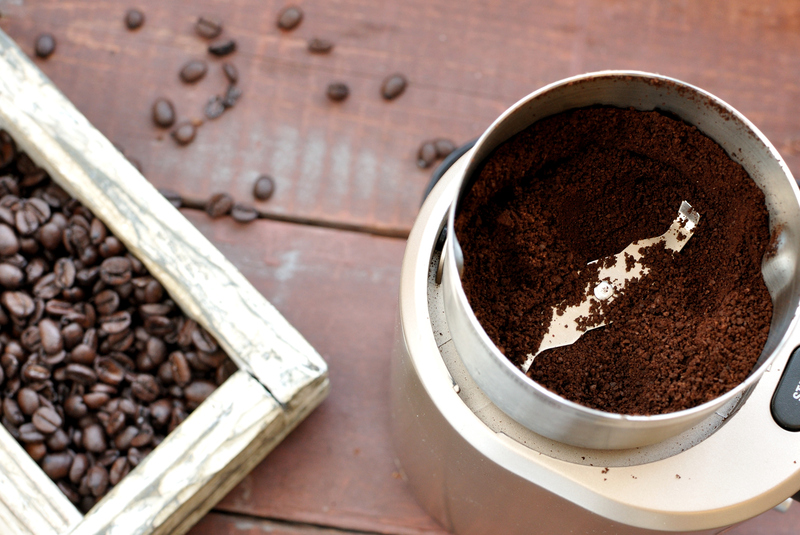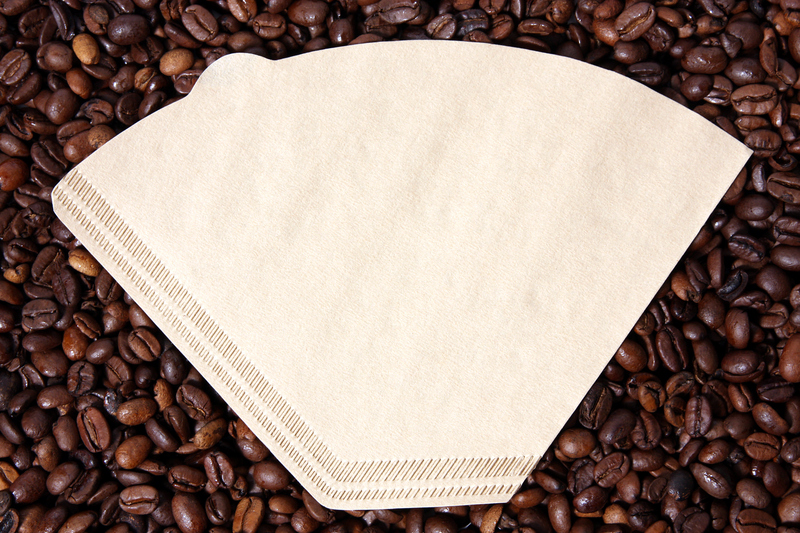Bid Grease Goodbye: Effortless Guide for Sparkling Enamel Oven Trays
Posted on 30/05/2025
Bid Grease Goodbye: Effortless Guide for Sparkling Enamel Oven Trays
Has your once-glossy enamel oven tray lost its shine beneath layers of stubborn grease and burnt-on residue? Cleaning enamel oven trays might seem like a daunting chore, but with the right knowledge and tools, you can restore their gleam without frustration. In this comprehensive guide, you'll find step-by-step instructions, expert tips, and answers to common questions--ensuring your enamel trays remain as beautiful and functional as the day you bought them.
Why Clean Enamel Oven Trays Regularly?
Maintaining sparkling clean enamel baking trays isn't just about aesthetics. Over time, baked-on grease, food stains, and carbon deposits can impact your oven's efficiency, transfer flavors to your meals, and even harbor bacteria. Regular cleaning:
- Extends the lifespan of your oven trays
- Prevents stubborn, hard-to-remove build-up
- Ensures hygienic cooking conditions
- Improves food quality by eliminating lingering odors and flavors

Understanding Enamel Oven Trays
Before tackling the cleaning process, it's important to understand what enamel oven trays are and how they differ from other ovenware. Enamel trays are typically made from durable steel or cast iron, coated with a layer of fused glass enamel. This coating gives a smooth, non-porous finish that's resistant to sticking and easy to clean--when cared for properly!
Advantages of Enamel Trays:
- Resistant to rust and corrosion
- Non-reactive with acidic foods
- Easy to maintain compared to uncoated metal trays
- Retain heat evenly for perfect cooking
Tools & Ingredients You'll Need
Gather the following supplies before embarking on your mission to achieve grease-free oven trays:
- Soft sponge or microfiber cloth
- Plastic or wooden scraper (never metal!)
- Baking soda (sodium bicarbonate)
- White vinegar
- Lemon juice
- Dish soap
- Warm water
- Old toothbrush (for crevices/corners)
- Rubber gloves (optional but recommended)
- Paper towels or clean dish towels
Step-by-Step: How to Clean Enamel Oven Trays Effortlessly
1. Let Trays Cool and Remove Loose Debris
*Never clean a hot tray!* Allow your enamel oven tray to cool completely before handling. Remove any leftover food, crumbs, or loose debris using a soft brush or paper towel. This prepares the tray for deeper cleaning and prevents scratching the surface.
2. Soaking: Your Secret Weapon
Many stubborn stains and greasy patches loosen up with a simple soak. Fill your sink with warm (not boiling) water and add a generous squirt of dish soap. Submerge the tray and let it soak for 30-60 minutes. For heavily soiled trays, sprinkle some baking soda on top of the burnt areas before soaking.
3. Gentle Scrubbing Techniques
After soaking, use a soft sponge or cloth to wipe away loosened grease. For remaining spots:
- Baking Soda Paste: Mix baking soda with water to form a paste. Apply to tough stains, let sit for 15-20 minutes, then scrub gently in circular motions.
- Plastic Scraper: For baked-on bits, gently scrape with a plastic or wooden scraper. Never use metal tools that can damage the enamel coating.
4. Vinegar and Lemon for Extra Shine
White vinegar is a natural degreaser. After removing debris:
- Spray vinegar (or rub lemon halves) over the tray, focusing on greasy or discolored areas.
- Let it sit for 10 minutes, then rinse and wipe clean with a sponge.
5. Rinse and Dry Thoroughly
Rinse your tray under warm running water to remove all cleaning residues. Wipe dry with a clean dish towel or paper towels. Proper drying prevents water spots and helps maintain that sparkling look!
6. Dealing With Persistent Stains
For stains that refuse to budge, try these advanced techniques:
- Overnight Baking Soda Soak: Sprinkle a thick layer of baking soda over the problem area. Sprinkle a little water to form a paste. Cover with a damp towel and let sit overnight before scrubbing.
- Steam Cleaning: Fill your dirty tray with a mixture of boiling water and a few tablespoons of vinegar. Place in a preheated oven at 100?C/212?F for 20 minutes. Let it cool, then wipe clean. Caution: Handle hot trays with oven mitts!
- Commercial Enamel-Safe Oven Cleaners: Ensure the product specifies it is safe for enamel surfaces to prevent accidental damage.
Preventing Grease Build-Up: Easy Care Tips
An ounce of prevention is worth a pound of scrubbing! Follow these simple care tips to minimize the need for heavy-duty cleaning:
- Use parchment paper or silicone mats when roasting sticky or greasy foods for an easy clean-up afterwards.
- Wipe trays down after every use rather than letting grease accumulate.
- Avoid thermal shock: Never move trays directly from a hot oven into cold water; this can crack the enamel.
- Store trays in a dry area to prevent moisture damage and rusting around edges.
- Handle with care: Avoid dropping or banging trays to prevent chipping.
Common Questions About Cleaning Enamel Oven Trays
Can I put enamel trays in the dishwasher?
While many enamel trays are labeled as "dishwasher safe," repeated cycles at high temperatures and exposure to strong detergents can cause dulled surfaces and, in rare cases, chipping over time. Hand washing with gentle methods is always recommended for longevity and sparkling results.
Is it safe to use oven cleaner on enamel trays?
Most commercial oven cleaners are formulated for stainless steel or glass surfaces and can be too harsh for enamel. Always check the manufacturer's instructions or use products specifically labeled as "enamel-safe." If in doubt, stick to natural cleaning agents like baking soda, vinegar, and lemon.
How do I remove discoloration from enamel oven trays?
Discoloration is typically caused by repeated high-heat exposure or burnt-on food. To remove:
- Make a paste of hydrogen peroxide and baking soda, apply, and let sit for a few hours before scrubbing.
- Repeat baking soda and vinegar cleaning routines regularly.
- Avoid using bleach, which can damage enamel finishes.
My enamel tray has chipped--can I still use it?
Minor chipping around the edges is common, but if the chip exposes large areas of metal, stop using it for food--rust can form and leach into your meals. Consider replacing the tray or using it for non-cooking purposes.
Natural, Homemade Enamel Tray Cleaner Recipes
-
Simple Baking Soda Scrub:
Mix 3 tablespoons of baking soda with enough warm water to form a thick paste. Apply to the tray, scrub gently, then rinse. -
Vinegar Power Soak:
Fill tray with hot water, add 1 cup of white vinegar. Let stand for 1 hour, then wipe away softened grease. -
Lemon Fresh Clean:
Squeeze lemon juice over the surface, sprinkle baking soda, allow fizzing, then wipe. Leaves a fresh scent and extra shine!

Extra Tips for Sparkling Enamel Oven Trays
- Always test baking soda and vinegar on a small corner before applying all over, especially on older trays.
- Never use steel wool pads or abrasive powders.
- For glossy shine, polish with a few drops of olive oil on a soft cloth after drying (optional).
- Deep clean trays every 2-3 months--even if they appear clean--to maintain non-stick performance.
- Read manufacturer's guidelines for specific cleaning recommendations.
Wrap-Up: Enjoy Gleaming, Grease-Free Oven Trays
Bid grease goodbye once and for all! By following these effortless, enamel-safe cleaning strategies, you'll keep your oven trays brilliantly clean and hygienic for years to come. Remember to act quickly after each use, treat your enamel gently, and use the power of simple pantry staples like baking soda, vinegar, and lemon for the best results.
Now, every time you slide a tray into your oven, you can be confident it's as good as new--ensuring every meal tastes its best. So say farewell to greasy buildup and hello to sparkling, enamel oven trays!
For more practical cleaning tips and kitchen care guides, bookmark this article and check back regularly!


